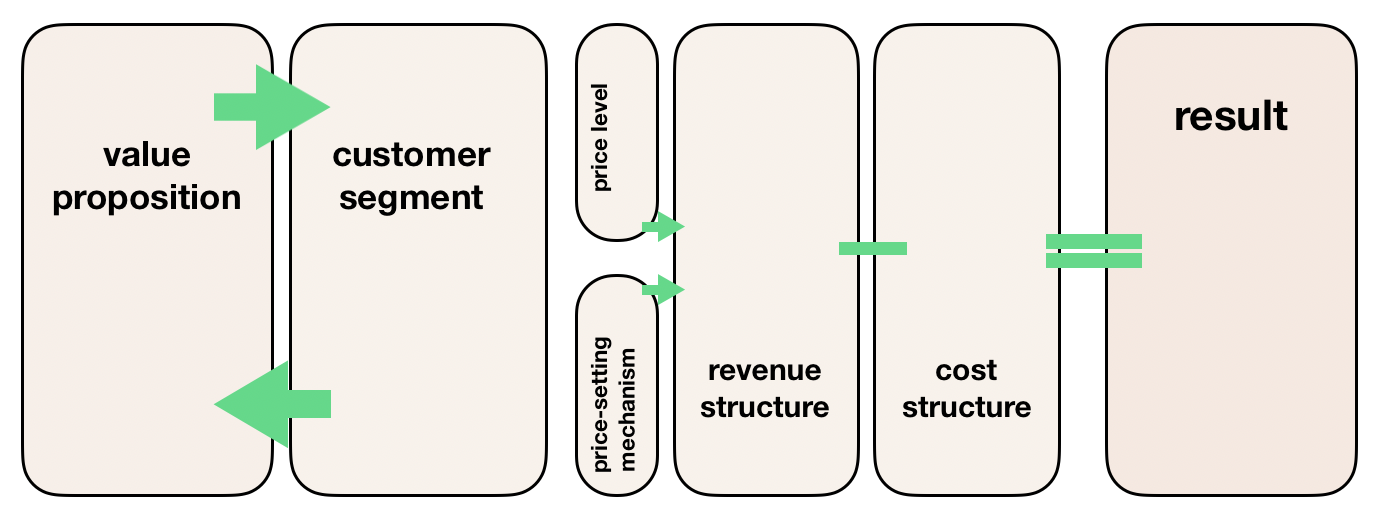Step-by-step plan revenue model
You earn money with your own business by determining a strong strategy. A revenue model (or several revenue models) is part of this strategy. The insights that the model will provide you with will help you to put your plans into words and you can also incorporate them into your business and marketing plan. You construct a rev*enue model from various components.
On this page
Extra

1. Determine the customer segment
For which customer are you working or creating work? With the rev*enue model, you make it clear which customer segment you want to address (your target group).
Directly to:
2. Determine the value proposition
Which of your customer’s needs are you meeting? You call the value that you can offer a customer a value proposition. It is the combination of products and/or services that ‘solve a problem for’ or ‘offer benefits to’ your customers.
3. Determine the price-setting mechanism
Is the price fixed or variable? What generates the most revenue? Are there discount options or extras for your customers? You opt for a price-setting mechanism that is in keeping with your target group and value propositions.
4. Determine the price level
How much will your product or service cost? Will you make this dependant on the costs that you incur, your competitors’ prices or what the customer can afford for your value proposition? Examples include the ‘pay-what-you-wish’ principle. You coordinate the price level and the price-setting mechanism.
Tips:
- Working for free is not a revenue model. Only do that if it is part of a good strategy, as a result of which it becomes an investment through which you will eventually create more revenues. Always be aware of the frameworks of the fair practice code. Remember: many people consider ‘free’ to be ‘worth nothing’.
- You can easily determine the price of a product or service by looking at the cost price or the price level of your competitors. However, you should also examine what customers would be willing to pay for your value proposition, because this may easily be higher than you think.
5. Determine the revenue structure
By determining the price-setting mechanism and the price level, you will gain insight into the revenue from this value proposition. Is it one-off revenue (in the case of product sales for example) or recurring revenue (monthly for example)? You make these revenue streams concrete and analyse them alongside the cost structure.
6. Determine the cost structure
What are your fixed and variable expenses? Fixed expenses include, for example, the rent for your workspace and the costs of website management. The variable expenses are dependent on the production volume, such as raw materials for a product or specific costs that you incur for an assignment.
7. Determine your result
You now have insight into how much money your revenue model will generate. What is the result of your revenue model in terms of members, users, customers and turnover? Is the turnover good enough? If not, determine your turnover target first and see how you can achieve this by adjusting your price level. And what is the result minus the costs: your return on investment (ROI), the customer appreciation and the payback period.